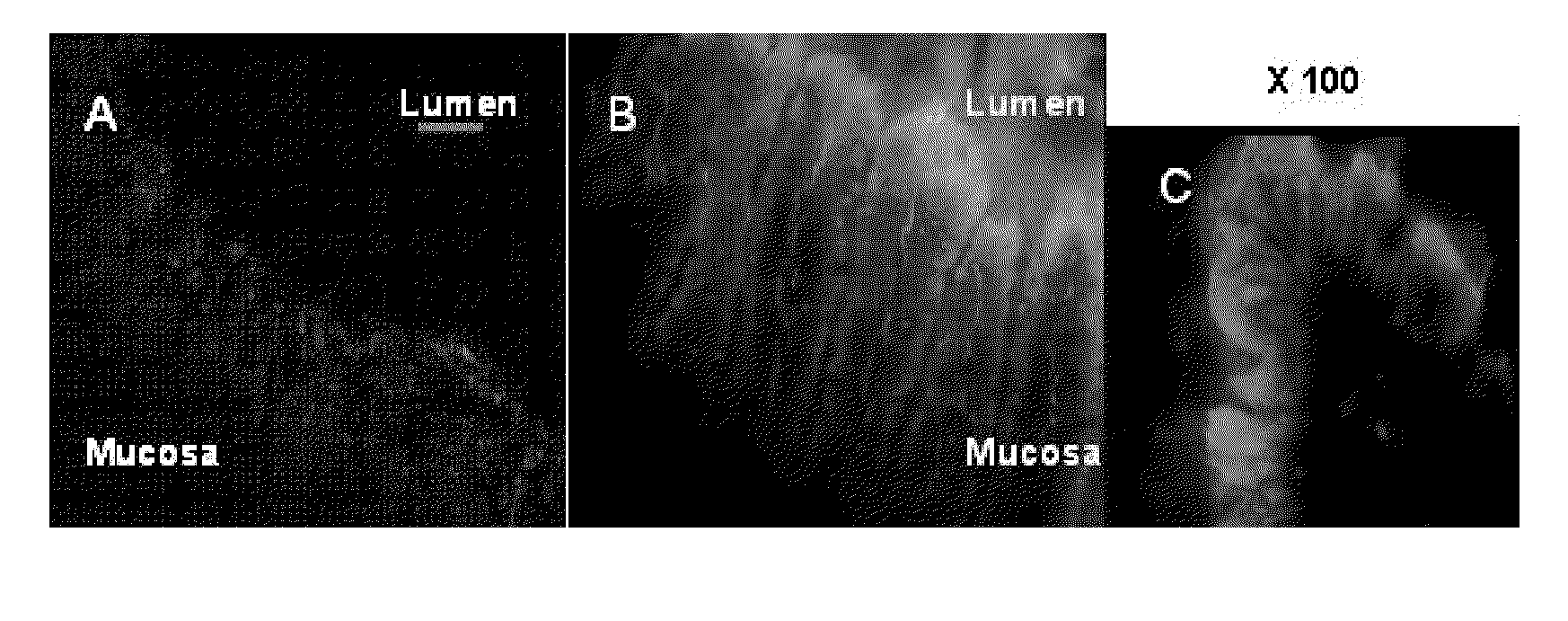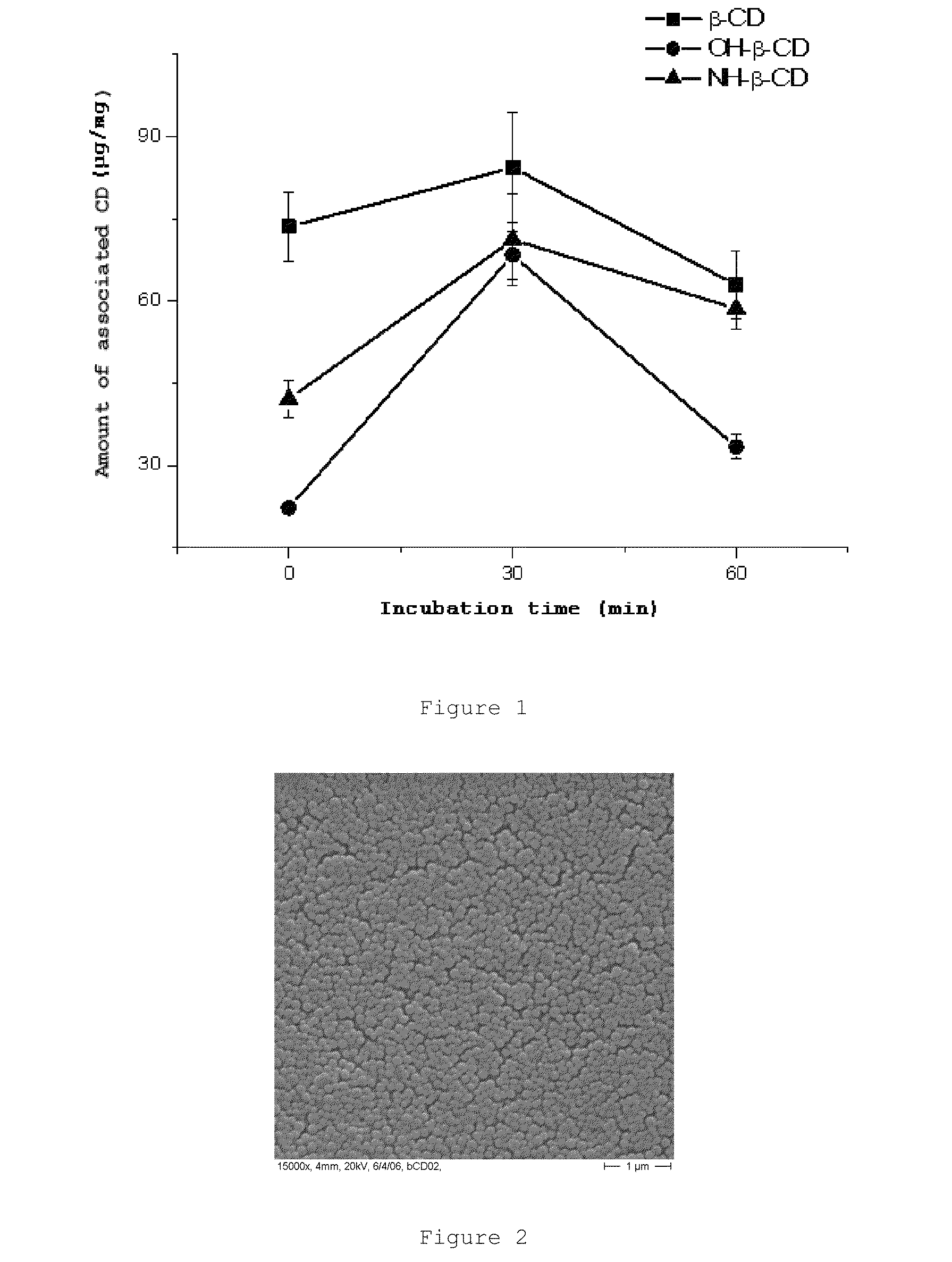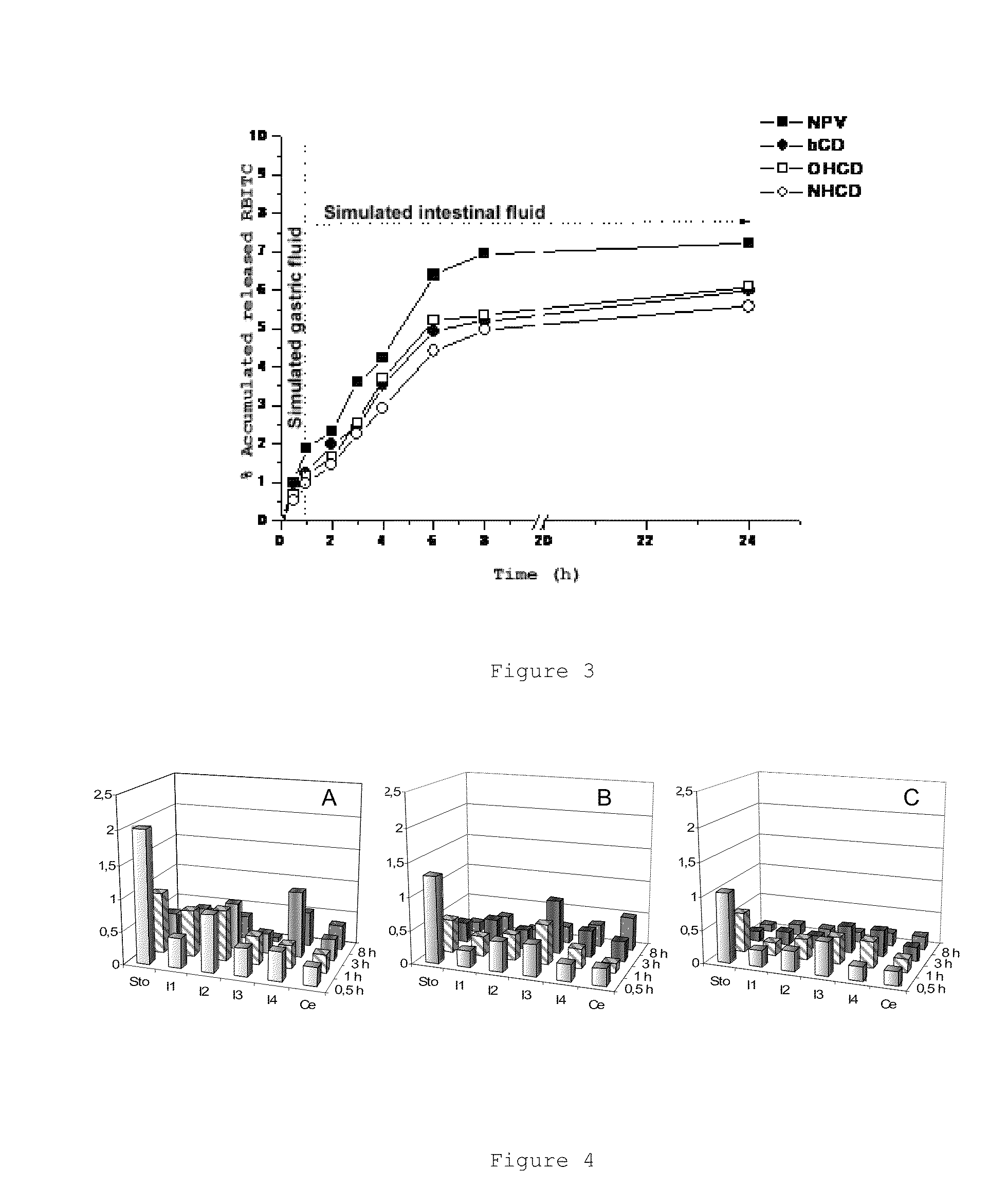Nanoparticles comprising a cyclodextrin and a biologically active molecule and uses thereof
a technology of cyclodextrin and nanoparticles, which is applied in the field of nanoparticles, can solve the problems of low high cost, and low efficacy of important drugs, and achieve the effects of reducing the sanitary cost of treatments, prolonging the residence time in the mucosa, and improving the bioavailability of biologically active molecules
- Summary
- Abstract
- Description
- Claims
- Application Information
AI Technical Summary
Benefits of technology
Problems solved by technology
Method used
Image
Examples
example 1
Optimization of the Process of Association Between a Biodegradable Polymer (PVM / MA) and a Cyclodextrin for Obtaining Nanoparticles
[0156]The nanoparticles were prepared by controlled desolvation after the modification of a previously described process [Arbos et al., J. Control. Release, 83 (2002) 321-330]. To that end, the methyl vinyl ether and maleic anhydride (PVM / MA) copolymer and a certain amount of β-cyclodextrin (β-CD), 2-hydroxypropyl-β-cyclodextrin (OH-β-CD) or 6-monodeoxy-6-monoamino-β-cyclodextrin (NH-β-CD) were incubated in acetone under magnetic stirring. After incubation, a miscible organic solvent (ethanol) and a similar volume of deionized water were added on this phase and under magnetic stirring, giving rise to the formation of the nanoparticles under the appearance of a milky suspension. After allowing the nanoparticle suspension to homogenize, it was evaporated under reduced pressure (Büchi R-144 rotary evaporator, Switzerland) until eliminating both organic solve...
example 2
Production of Nanoparticles Containing Cyclodextrins
2.1 Production of Nanoparticles Containing Cyclodextrins
[0161]The nanoparticles were prepared by controlled desolvation after the modification of a previously described process [Arbos et al., J. Control. Release, 83 (2002) 321-330]. To that end, 25 mg of β-CD, OH-β-CD or NH-β-CD were dispersed in 2 ml of acetone with the aid of ultrasound (Microson™ or in an ultrasound bath for 1 minute under cooling). This suspension was added to a solution of 100 mg of methyl vinyl ether and maleic anhydride (PVM / MA) copolymer [Gantrez® AN 119] in 3 ml of acetone and the mixture was allowed to incubate for 30 minutes. Subsequently, 10 ml of ethanol and 10 ml of deionized water were added on this phase and under magnetic stirring. The resulting mixture was allowed to homogenize for 5 minutes. The nanoparticle suspension was then evaporated under reduced pressure (Büchi R-144, Switzerland) until eliminating both organic solvents and the final volum...
example 3
Production of Nanoparticles Containing Cyclodextrins and RBITC
[0166]The nanoparticles were prepared by controlled desolvation after the modification of a previously described process [Arbos et al., J. Control. Release, 83 (2002) 321-330]. To that end, 25 mg of β-CD, OH-β-CD or NH-β-CD were dispersed in 2 ml of acetone with the aid of ultrasound (Microson™ or in an ultrasound bath for 1 minute under cooling). This suspension was added to a solution of 100 mg of methyl vinyl ether and maleic anhydride (PVM / MA) copolymer [Gantrez® AN 119] in 3 ml of acetone and the mixture was allowed to incubate for 30 minutes. Subsequently, 10 ml of ethanol and 10 ml of deionized water were added on this phase and under magnetic stirring. The resulting mixture was allowed to homogenize for 5 minutes. The nanoparticle suspension was then evaporated under reduced pressure (Büchi R-144, Switzerland) until eliminating both organic solvents and the final volume was adjusted with water to 10 ml. An aqueous...
PUM
| Property | Measurement | Unit |
|---|---|---|
| size | aaaaa | aaaaa |
| mean size | aaaaa | aaaaa |
| particle size | aaaaa | aaaaa |
Abstract
Description
Claims
Application Information
 Login to View More
Login to View More - R&D
- Intellectual Property
- Life Sciences
- Materials
- Tech Scout
- Unparalleled Data Quality
- Higher Quality Content
- 60% Fewer Hallucinations
Browse by: Latest US Patents, China's latest patents, Technical Efficacy Thesaurus, Application Domain, Technology Topic, Popular Technical Reports.
© 2025 PatSnap. All rights reserved.Legal|Privacy policy|Modern Slavery Act Transparency Statement|Sitemap|About US| Contact US: help@patsnap.com



